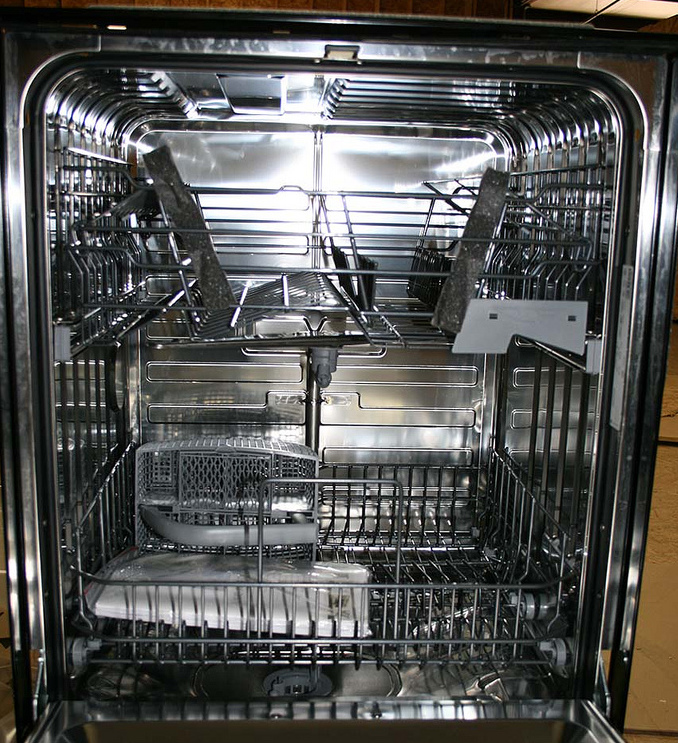A dishwasher typically uses the equivalent of 700–850 kilowatt-hours of electricity annually, or nearly as much energy as a clothes dryer or freezer. About 80 percent of this energy is used, not to run the machine, but to heat the water for washing the dishes.
- Older dishwashers use about 8–14 gallons of water for a complete wash cycle.
- Newer dishwashers, built in the past 10 years, have been using 7–10 gallons per cycle.
The dishwasher is the only device at home that requires a water heater temperature that is about 140°F. The units built recently have supplemental heaters in the dishwashers to bump up the temperature so that the main water heater temperature can be set at 120°F or less. Remember that each 10°F reduction in water heater temperature lowers the water heater energy cost by 3 percent to 5 percent.
How a Dishwasher Works
A dishwasher is essentially an insulated water tight box. The dirty dishes are systematically arranged in the dishwasher. As shown below, hot water is sprayed on to the dishes as jets. Repeated jets of water emanating from a spray arm clean the dishes. Some models have two spray arms: one at the bottom of the dishwasher (lower spray arm) and one at the top (upper spray arm). The dirty water passes through a filter and re-circulates until the dishes are finished. Fresh water is then spayed during the rinse cycle to remove the soapy water. Then the dishes are dried with either electric heat or simply with air.

Press the “play” button to see how a dishwasher works. This is also described in the paragraph above. (Note: The animation has no audio.)
Features of a Dishwasher
Dishwashers can be built-in or portable. Built-ins are mounted under a kitchen countertop usually next to a sink. Portables are on wheels with finished tops and sides. Most models can be converted into under-counter mounting. However, because of the additional connection hardware and finished sides, portables usually cost more than similar built-in models.
Some of the additional features that are offered are:
- Interior layout—configuration of sliding racks, baskets, and trays. Does the washing arm reduce the amount of loadable space?
- Water heating—Most homes have water heaters set to 110 degrees. However, to clean well, a dishwasher should use water at 140 degrees. Many budget units now offer a water heating feature.
- Number of cycles—light cycles, normal, heavy or pans, and rinse and hold to remove food if dishes will sit in the washer a while before the wash cycle is run.
- Water-saving cycles—If you live in an area where fresh water is scarce, you’ll want to consider this feature.
- Sound insulation—The sound level will vary from one model to another. Consider how important a quiet wash cycle is before you purchase.
- Build in food disposers—will grind up food similar to in-sink units, allowing the user to spend less time cleaning dishes before they go into the dishwasher.
- Controls—Entry-level machines feature knob and dial controls. On mid- to upper-end models, you will find push-button switches hidden behind smooth, one-piece, plastic console covers. Some of the highest priced dishwashers feature electronic touchpad controls with lighted displays for an uncluttered, high-tech look. And the highest-end European models now integrate controls on the top of the door so they can't be seen when the machine is closed.
- Countdown timer — lets you know how much time is left in a cycle.
- Clean light — signals that cycle is complete and dishes are clean.
- Soil sensors — take the guesswork out of cycle selection. Sensors optically analyze dirtiness of water and adjust water level and wash length accordingly.
- Delay-start — timer that allows starting dishwasher automatically; lets you take advantage of late-night off-peak power rates or run the dishwasher after everyone has taken a shower.
- Color and Appearance—Does the dishwasher fit in your kitchen? Do you like its appearance?
- Delay Start Timer—Allows the user to load the washer and have it start a few hours later.